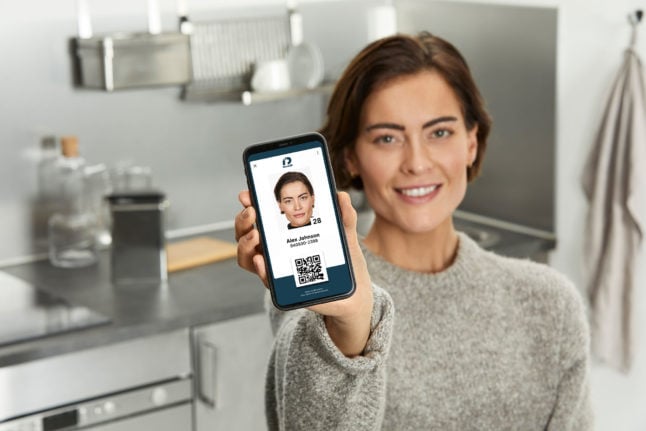The rise in mobile contact payments means more and more people in Sweden are leaving their wallets at home, only to find out they can’t pick up a parcel or buy alcohol because they don’t have their personal ID with them.
BankID, which is run by a company owned by Sweden’s seven biggest banks, has now gone some way to solving this problem with the launch of its new digital ID card.
The new digital card links your BankID and password with the photo, personal number and other info stored with your actual national identity card or passport, so that you can present a photo and QR code on your phone to prove your identity.
What do you need to get the new digital ID card?
You can create your new digital ID card in minutes, so long as you already have:
- An account with one of the seven banks which issue BankID
- BankID
- A Swedish passport or national identity card (driving licences or foreign passports are not accepted)
- A phone capable of reading NFC chips
You can watch a video (in Swedish) on how to activate the card here.
How do you create the digital ID card?
Open up the BankID app on your phone and press the new “ID-kort” or “ID card” icon at the bottom of the screen.
Press “activate ID card”, and then accept the conditions.
Sign in to your BankID with your special number.
Choose whether you want to use your Swedish passport or your national ID card.
Photograph your ID card or the plastic page in your passport.
Lay your phone over your passport or ID card so the NFC reader on your phone can scan it.
How long does the ID last for?
The ID card will remain on your phone until either your Mobile BankID or the ID document you used to create the digital ID card expires.
How can you use the ID card?
If you are picking up a parcel from PostNord or another parcel service, or buying alcohol at Systembolaget, you start up Mobile BankID on your phone, press the ID kort icon, sign into BankID, and then present the screen showing your picture, personal number and a QR code to the person you want to identify yourself to.



 Please whitelist us to continue reading.
Please whitelist us to continue reading.
It is not working with the Skatteverket issued ID card, which essentially means that this new digital ID system is only for Swedish citizens.